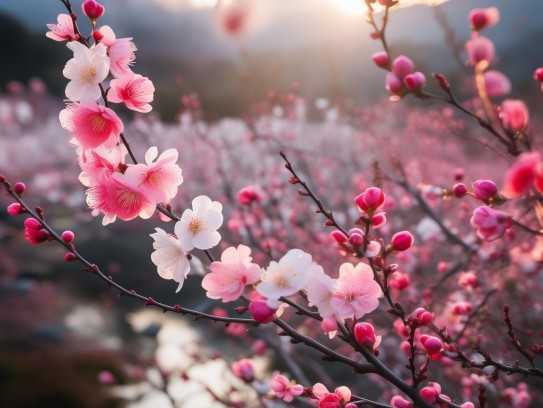This comprehensive dictionary explores the intricate language of flowers in the home, offering an extensive guide to flower meanings and their cultural significance. From romantic gestures to expressing gratitude, discover the hidden messages flowers convey and enhance your home's ambiance with meaningful floral arrangements.
Introduction

Flowers have been a universal symbol of love, admiration, and celebration for centuries. Each bloom carries its own unique message and can be used to express a wide range of emotions and sentiments. In the context of family, flowers can serve as a beautiful and meaningful way to communicate feelings and foster deeper connections. This article presents a comprehensive flower language dictionary, focusing on the meanings and symbolism of various flowers that are often used to express love and appreciation within the family setting.
1. Rose
The rose is perhaps the most iconic flower when it comes to love and affection. Different colors of roses carry different meanings:
Red Rose: Represents deep love and passion.
Pink Rose: Symbolizes gratitude and admiration.
White Rose: Signifies purity and innocence.
Yellow Rose: Conveys friendship and joy.
Orange Rose: Expresses enthusiasm and desire.
2. Lily
Lilies are another popular choice for expressing love and admiration within the family. They come in various colors and each has its own special meaning:
White Lily: Signifies purity and unity.
Pink Lily: Represents passion and admiration.
Orange Lily: Conveys warmth and joy.
Yellow Lily: Symbolizes friendship and loyalty.
3. Chrysanthemum
Chrysanthemums are often associated with happiness and longevity. They are a favorite for expressing gratitude and respect within the family:
White Chrysanthemum: Represents peace and tranquility.
Yellow Chrysanthemum: Conveys loyalty and friendship.
Red Chrysanthemum: Symbolizes love and passion.
4. Tulip
Tulips are a symbol of love and happiness. The color of the tulip can further enhance the message:
Red Tulip: Represents true love.
Pink Tulip: Signifies happiness and gratitude.
Yellow Tulip: Conveys cheerful thoughts and feelings.
5. Orchid
Orchids are exotic and elegant, making them a beautiful choice for expressing admiration and affection:
White Orchid: Represents pure love and beauty.
Pink Orchid: Symbolizes luxury and romance.
Purple Orchid: Conveys elegance and strength.
6. Peony
Peonies are a symbol of prosperity and good fortune. They are often used to express joy and happiness within the family:
Red Peony: Represents good luck and happiness.
Pink Peony: Conveys a wish for prosperity and success.
White Peony: Symbolizes bashfulness and modesty.
7. Lily of the Valley
Lily of the Valley is a delicate and sweet-scented flower that signifies purity and the return of happiness:
White Lily of the Valley: Represents purity and humility.
Pink Lily of the Valley: Conveys happiness and joy.
8. Carnation
Carnations are a versatile flower that can express a range of emotions:
Red Carnation: Represents love and admiration.
Pink Carnation: Signifies gratitude and motherly love.
White Carnation: Conveys pure love and innocence.
9. Sunflower
Sunflowers are a symbol of adoration and loyalty. They are often given to express deep affection and admiration:
Yellow Sunflower: Represents adoration and loyalty.
10. Daffodil
Daffodils are a symbol of chivalry and hope. They can be used to express cheerfulness and joy:
Yellow Daffodil: Conveys joy and chivalry.
White Daffodil: Represents the arrival of spring and new beginnings.
Conclusion
The language of flowers is a rich and expressive way to communicate love, appreciation, and other sentiments within the family. Whether you are celebrating a birthday, expressing gratitude, or simply conveying affection, the right flower can help you say exactly what you mean. This comprehensive flower language dictionary provides a guide to the meanings and symbolism of various flowers, ensuring that your gift of flowers is as meaningful as the emotions you wish to convey.
相关阅读:
1、The Secret Language of Flowers: A Concise English Flower Language Guide
2、Decoding the English Pronunciation and Mystique of Lily Flower Language
4、Floral Emotions: The Art of Expression Through Flower Language in English
5、Mastering the Art of Elegant English Flower Language: A Comprehensive Dictionary with Translations
Unlock the Emotional Secrets of Flower Arrangements: A Comprehensive Video Guide to Flower Language
Unlocking the Emotional Secrets of Flowers: A Comprehensive Flower Language Dictionary
Unlocking the Secrets of Pearl Flower Language: Your Ultimate English Guide
The Ultimate Flower Language Resource: The Comprehensive Dictionary of Flower Meanings










全部评论
留言在赶来的路上...
发表评论